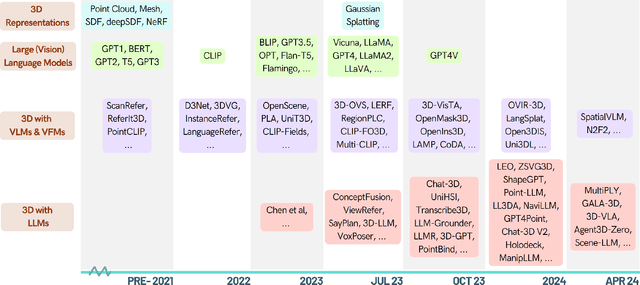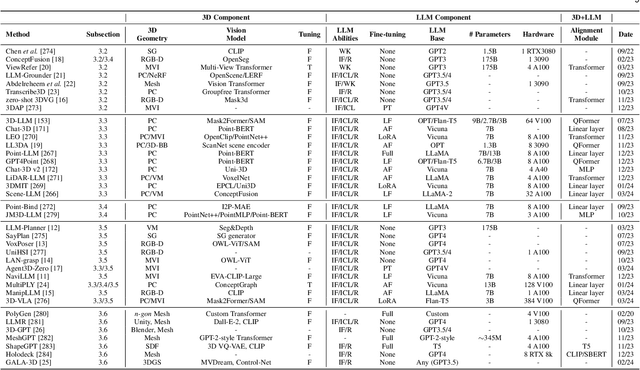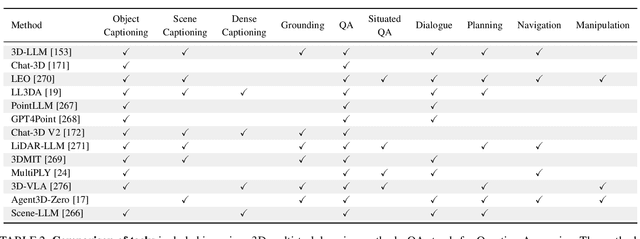Shuai Chen
for the ALFA study
CMaP-SAM: Contraction Mapping Prior for SAM-driven Few-shot Segmentation
Apr 07, 2025Abstract:Few-shot segmentation (FSS) aims to segment new classes using few annotated images. While recent FSS methods have shown considerable improvements by leveraging Segment Anything Model (SAM), they face two critical limitations: insufficient utilization of structural correlations in query images, and significant information loss when converting continuous position priors to discrete point prompts. To address these challenges, we propose CMaP-SAM, a novel framework that introduces contraction mapping theory to optimize position priors for SAM-driven few-shot segmentation. CMaP-SAM consists of three key components: (1) a contraction mapping module that formulates position prior optimization as a Banach contraction mapping with convergence guarantees. This module iteratively refines position priors through pixel-wise structural similarity, generating a converged prior that preserves both semantic guidance from reference images and structural correlations in query images; (2) an adaptive distribution alignment module bridging continuous priors with SAM's binary mask prompt encoder; and (3) a foreground-background decoupled refinement architecture producing accurate final segmentation masks. Extensive experiments demonstrate CMaP-SAM's effectiveness, achieving state-of-the-art performance with 71.1 mIoU on PASCAL-$5^i$ and 56.1 on COCO-$20^i$ datasets.
EvoP: Robust LLM Inference via Evolutionary Pruning
Feb 19, 2025Abstract:Large Language Models (LLMs) have achieved remarkable success in natural language processing tasks, but their massive size and computational demands hinder their deployment in resource-constrained environments. Existing structured pruning methods address this issue by removing redundant structures (e.g., elements, channels, layers) from the model. However, these methods employ a heuristic pruning strategy, which leads to suboptimal performance. Besides, they also ignore the data characteristics when pruning the model. To overcome these limitations, we propose EvoP, an evolutionary pruning framework for robust LLM inference. EvoP first presents a cluster-based calibration dataset sampling (CCDS) strategy for creating a more diverse calibration dataset. EvoP then introduces an evolutionary pruning pattern searching (EPPS) method to find the optimal pruning pattern. Compared to existing structured pruning techniques, EvoP achieves the best performance while maintaining the best efficiency. Experiments across different LLMs and different downstream tasks validate the effectiveness of the proposed EvoP, making it a practical and scalable solution for deploying LLMs in real-world applications.
RadioLLM: Introducing Large Language Model into Cognitive Radio via Hybrid Prompt and Token Reprogrammings
Jan 28, 2025Abstract:The increasing scarcity of spectrum resources and the rapid growth of wireless device have made efficient management of radio networks a critical challenge. Cognitive Radio Technology (CRT), when integrated with deep learning (DL), offers promising solutions for tasks such as radio signal classification (RSC), signal denoising, and spectrum allocation. However, existing DL-based CRT frameworks are often task-specific and lack scalability to diverse real-world scenarios. Meanwhile, Large Language Models (LLMs) have demonstrated exceptional generalization capabilities across multiple domains, making them a potential candidate for advancing CRT technologies. In this paper, we introduce RadioLLM, a novel framework that incorporates Hybrid Prompt and Token Reprogramming (HPTR) and a Frequency Attuned Fusion (FAF) module to enhance LLMs for CRT tasks. HPTR enables the integration of radio signal features with expert knowledge, while FAF improves the modeling of high-frequency features critical for precise signal processing. These innovations allow RadioLLM to handle diverse CRT tasks, bridging the gap between LLMs and traditional signal processing methods. Extensive empirical studies on multiple benchmark datasets demonstrate that the proposed RadioLLM achieves superior performance over current baselines.
Retrieval-Augmented Generation by Evidence Retroactivity in LLMs
Jan 07, 2025Abstract:Retrieval-augmented generation has gained significant attention due to its ability to integrate relevant external knowledge, enhancing the accuracy and reliability of the LLMs' responses. Most of the existing methods apply a dynamic multiple retrieval-generating process, to address multi-hop complex questions by decomposing them into sub-problems. However, these methods rely on an unidirectional forward reasoning paradigm, where errors from insufficient reasoning steps or inherent flaws in current retrieval systems are irreversible, potentially derailing the entire reasoning chain. For the first time, this work introduces Retroactive Retrieval-Augmented Generation (RetroRAG), a novel framework to build a retroactive reasoning paradigm. RetroRAG revises and updates the evidence, redirecting the reasoning chain to the correct direction. RetroRAG constructs an evidence-collation-discovery framework to search, generate, and refine credible evidence. It synthesizes inferential evidence related to the key entities in the question from the existing source knowledge and formulates search queries to uncover additional information. As new evidence is found, RetroRAG continually updates and organizes this information, enhancing its ability to locate further necessary evidence. Paired with an Answerer to generate and evaluate outputs, RetroRAG is capable of refining its reasoning process iteratively until a reliable answer is obtained. Empirical evaluations show that RetroRAG significantly outperforms existing methods.
Intent-Enhanced Data Augmentation for Sequential Recommendation
Oct 11, 2024



Abstract:The research on intent-enhanced sequential recommendation algorithms focuses on how to better mine dynamic user intent based on user behavior data for sequential recommendation tasks. Various data augmentation methods are widely applied in current sequential recommendation algorithms, effectively enhancing the ability to capture user intent. However, these widely used data augmentation methods often rely on a large amount of random sampling, which can introduce excessive noise into the training data, blur user intent, and thus negatively affect recommendation performance. Additionally, these methods have limited approaches to utilizing augmented data, failing to fully leverage the augmented samples. We propose an intent-enhanced data augmentation method for sequential recommendation(\textbf{IESRec}), which constructs positive and negative samples based on user behavior sequences through intent-segment insertion. On one hand, the generated positive samples are mixed with the original training data, and they are trained together to improve recommendation performance. On the other hand, the generated positive and negative samples are used to build a contrastive loss function, enhancing recommendation performance through self-supervised training. Finally, the main recommendation task is jointly trained with the contrastive learning loss minimization task. Experiments on three real-world datasets validate the effectiveness of our IESRec model.
GSLoc: Efficient Camera Pose Refinement via 3D Gaussian Splatting
Aug 20, 2024



Abstract:We leverage 3D Gaussian Splatting (3DGS) as a scene representation and propose a novel test-time camera pose refinement framework, GSLoc. This framework enhances the localization accuracy of state-of-the-art absolute pose regression and scene coordinate regression methods. The 3DGS model renders high-quality synthetic images and depth maps to facilitate the establishment of 2D-3D correspondences. GSLoc obviates the need for training feature extractors or descriptors by operating directly on RGB images, utilizing the 3D vision foundation model, MASt3R, for precise 2D matching. To improve the robustness of our model in challenging outdoor environments, we incorporate an exposure-adaptive module within the 3DGS framework. Consequently, GSLoc enables efficient pose refinement given a single RGB query and a coarse initial pose estimation. Our proposed approach surpasses leading NeRF-based optimization methods in both accuracy and runtime across indoor and outdoor visual localization benchmarks, achieving state-of-the-art accuracy on two indoor datasets.
SARA: Singular-Value Based Adaptive Low-Rank Adaption
Aug 06, 2024Abstract:With the increasing number of parameters in large pre-trained models, LoRA as a parameter-efficient fine-tuning(PEFT) method is widely used for not adding inference overhead. The LoRA method assumes that weight changes during fine-tuning can be approximated by low-rank matrices. However, the rank values need to be manually verified to match different downstream tasks, and they cannot accommodate the varying importance of different layers in the model. In this work, we first analyze the relationship between the performance of different layers and their ranks using SVD. Based on this, we design the Singular-Value Based Adaptive Low-Rank Adaption(SARA), which adaptively finds the rank during initialization by performing SVD on the pre-trained weights. Additionally, we explore the Mixture-of-SARA(Mo-SARA), which significantly reduces the number of parameters by fine-tuning only multiple parallel sets of singular values controlled by a router. Extensive experiments on various complex tasks demonstrate the simplicity and parameter efficiency of our methods. They can effectively and adaptively find the most suitable rank for each layer of each model.
No Re-Train, More Gain: Upgrading Backbones with Diffusion Model for Few-Shot Segmentation
Jul 23, 2024Abstract:Few-Shot Segmentation (FSS) aims to segment novel classes using only a few annotated images. Despite considerable process under pixel-wise support annotation, current FSS methods still face three issues: the inflexibility of backbone upgrade without re-training, the inability to uniformly handle various types of annotations (e.g., scribble, bounding box, mask and text), and the difficulty in accommodating different annotation quantity. To address these issues simultaneously, we propose DiffUp, a novel FSS method that conceptualizes the FSS task as a conditional generative problem using a diffusion process. For the first issue, we introduce a backbone-agnostic feature transformation module that converts different segmentation cues into unified coarse priors, facilitating seamless backbone upgrade without re-training. For the second issue, due to the varying granularity of transformed priors from diverse annotation types, we conceptualize these multi-granular transformed priors as analogous to noisy intermediates at different steps of a diffusion model. This is implemented via a self-conditioned modulation block coupled with a dual-level quality modulation branch. For the third issue, we incorporates an uncertainty-aware information fusion module that harmonizing the variability across zero-shot, one-shot and many-shot scenarios. Evaluated through rigorous benchmarks, DiffUp significantly outperforms existing FSS models in terms of flexibility and accuracy.
Efficient User Sequence Learning for Online Services via Compressed Graph Neural Networks
Jun 05, 2024Abstract:Learning representations of user behavior sequences is crucial for various online services, such as online fraudulent transaction detection mechanisms. Graph Neural Networks (GNNs) have been extensively applied to model sequence relationships, and extract information from similar sequences. While user behavior sequence data volume is usually huge for online applications, directly applying GNN models may lead to substantial computational overhead during both the training and inference stages and make it challenging to meet real-time requirements for online services. In this paper, we leverage graph compression techniques to alleviate the efficiency issue. Specifically, we propose a novel unified framework called ECSeq, to introduce graph compression techniques into relation modeling for user sequence representation learning. The key module of ECSeq is sequence relation modeling, which explores relationships among sequences to enhance sequence representation learning, and employs graph compression algorithms to achieve high efficiency and scalability. ECSeq also exhibits plug-and-play characteristics, seamlessly augmenting pre-trained sequence representation models without modifications. Empirical experiments on both sequence classification and regression tasks demonstrate the effectiveness of ECSeq. Specifically, with an additional training time of tens of seconds in total on 100,000+ sequences and inference time preserved within $10^{-4}$ seconds/sample, ECSeq improves the prediction R@P$_{0.9}$ of the widely used LSTM by $\sim 5\%$.
When LLMs step into the 3D World: A Survey and Meta-Analysis of 3D Tasks via Multi-modal Large Language Models
May 16, 2024



Abstract:As large language models (LLMs) evolve, their integration with 3D spatial data (3D-LLMs) has seen rapid progress, offering unprecedented capabilities for understanding and interacting with physical spaces. This survey provides a comprehensive overview of the methodologies enabling LLMs to process, understand, and generate 3D data. Highlighting the unique advantages of LLMs, such as in-context learning, step-by-step reasoning, open-vocabulary capabilities, and extensive world knowledge, we underscore their potential to significantly advance spatial comprehension and interaction within embodied Artificial Intelligence (AI) systems. Our investigation spans various 3D data representations, from point clouds to Neural Radiance Fields (NeRFs). It examines their integration with LLMs for tasks such as 3D scene understanding, captioning, question-answering, and dialogue, as well as LLM-based agents for spatial reasoning, planning, and navigation. The paper also includes a brief review of other methods that integrate 3D and language. The meta-analysis presented in this paper reveals significant progress yet underscores the necessity for novel approaches to harness the full potential of 3D-LLMs. Hence, with this paper, we aim to chart a course for future research that explores and expands the capabilities of 3D-LLMs in understanding and interacting with the complex 3D world. To support this survey, we have established a project page where papers related to our topic are organized and listed: https://github.com/ActiveVisionLab/Awesome-LLM-3D.
 Add to Chrome
Add to Chrome Add to Firefox
Add to Firefox Add to Edge
Add to Edge